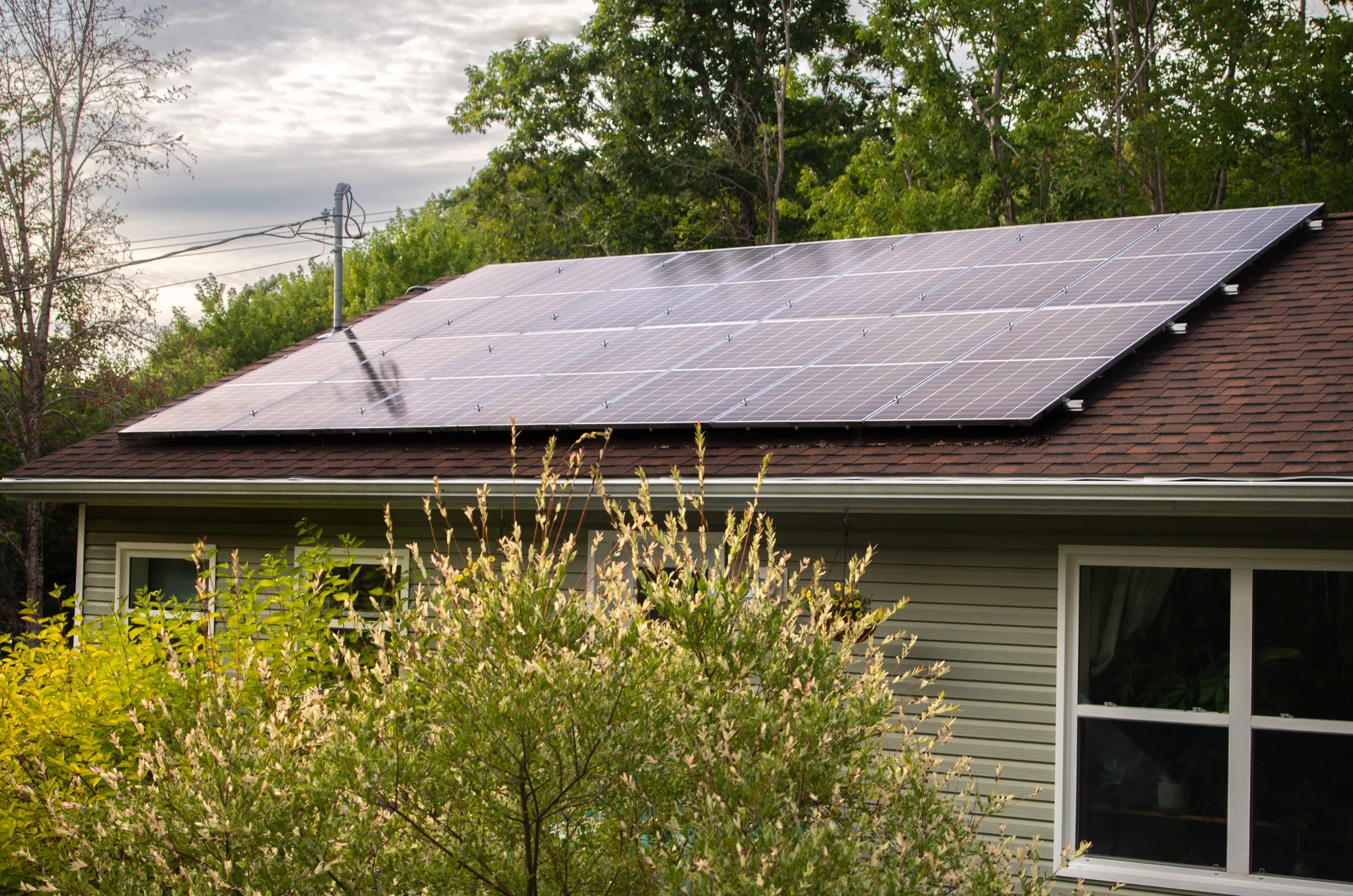Bringing It Home
Leveraging carbon credits as a source of funding for local non-profits.
Parker Street Food and Furniture Bank staff donate toys to Halifax's new Ronald McDonald House last April. Photo courtesy of Parker Street Food and Furniture Bank.
What can an energy-intensive company do to reduce its carbon footprint? The answer for most is buying carbon credits on the voluntary carbon market to offset polluting activities. In this system, one carbon credit represents one tonne of greenhouse gas emissions reduction or removal. Sometimes known as a “sin tax” for polluters, the upside is that carbon offsets could help non-profits achieve financial and climate goals that would be otherwise out of reach.
Halifax-based carbon offset provider ROCarbon (ROC) helps connect companies looking to purchase carbon credits with building owners wanting to sell credits to the voluntary carbon market. Co-founded in 2018 by April McLeod and Megan McCarthy, McCarthy says the company aims for both ecological and social integrity when it comes to its offsets.
“We founded ROC to eliminate greenwashing and the faulty data that we’re seeing in carbon offset projects. People walking around with clipboards is still the main way we measure these projects — with “guesstimations”. I realized the real-time energy data we provide at ROC could play a big role in fixing the carbon markets.”
McCarthy’s company looked at buildings as potential carbon offsets, taking advantage of ample roof space that could host impressive arrays of solar panels. But costs can be an issue, particularly for non-profits.
“Where buildings have a massive footprint, owners can’t move forward on green projects simply because they don’t have the funding to do so,” McCarthy says.
This was the case for one of ROC’s clients, the Parker Street Food and Furniture Bank, the oldest organization of its kind in Nova Scotia.
The need for Parker Street’s services has skyrocketed since COVID, as have their energy bills. With a $218,000 grant secured from Infrastructure Canada, Parker Street is in the process of purchasing two heat pumps and solar panels, that, once installed, will represent $10,000 in savings or 80 per cent of their annual energy bill. But there’s a hitch.
“It being an old building with lots of upgrades, the roof needs some reinforcement in order for the solar panels to go on,” McCarthy says. “That’s where we’re seeking buyers to purchase the carbon credits from Parker Street. They’re going to be generating roughly 500 tonnes of credits over the next ten years and that’s what we’re selling to help the roof project move forward.”
Parker Street and the company or companies that purchase their carbon credits will have access to 10 years of energy data monitoring from ROC over the life of the project, helping both organizations meet their climate goals. For the food and furniture bank, the savings on energy bills will allow them to offer more programming, along with the funding to get their roof ready.
And McCarthy’s commitment to a greener world isn’t limited to her work. Her home is also a model of energy efficiency — all for under $250,000.
“My husband, a Red Seal carpenter by trade, has dedicated his career to working with outfits that are focused on environment and energy efficiency. He’d come home from work and say, ‘Wouldn’t it be great if we could find a way to build a passive home that doesn’t cost a million bucks?’”
The chance to build came in 2019 when the couple purchased land twenty minutes outside Halifax. Their 1040-square-foot modular house, pre-built in a warehouse, faces south instead of toward the street (for optimal sun exposure) and features extra insulation, a heat pump, and rooftop solar panels — bringing their energy costs down to 22 cents per day. The home’s passive solar construction considers the changing angle of the sun, making sure its rays come fully in the windows in winter, when heat is needed, but not in summer. Other smart design features include a well located uphill from a septic system to reduce energy costs (from pumping).
Solar panels on Megan McCarthy’s home. Photo by Sean Kelly.
The home’s $250K price tag included land, well drilling, septic construction, and moving the house into place by crane. It’s a model McCarthy and her husband are eager to share so are planning to offer house tours to show how the house works and looks.
For McCarthy, a better future clearly begins at home.
Climate Stories Atlantic is an initiative of Climate Focus, a non-profit organization dedicated to covering stories about community-driven climate solutions.
Sign up for notifications of our latest free articles. You can unsubscribe at any time.


